Although, I have to admit I didn't do well in chemistry or physics when in high school. I wanted the opportunity to overcome my fear and learn WITH my child what I never learned at school. I tend to shy away from anything that deals with this topic, but I had a strong desire to teach Alyssa a different subject area in science this year particularly one that will help her understand the world that God made. Unfortunately, we weren't doing any experiments with our current science curriculum and I believe hands-on experiments, demonstrations, and projects are necessary in order to teach science effectively to children. I began this journey with a bit of hesitation and fear yet I knew that I wanted my daughter to be exposed to the concepts of Chemistry and Physics at an early age in hopes to lay a strong foundation down for the future. Thankfully, the topics were not as intimidating as I remembered!
How We Used It
I am using this curriculum with Alyssa (Age 5) as her core science curriculum in conjunction with notebooking, lapbooking, and with an online spelling and vocabulary program. Our science lessons last approximately 30 minutes to 1 1/2 hours. My daughter finds lapbooking enjoyable so I also purchased a lap book to go along with this curriculum. We barely have time for the additional activities, because Apologia's science curriculum is so thorough and comprehensive. No other supplementary items are necessary. My plan was to follow the suggested schedule found in the notebooking journal, but I quickly realized that I needed to adapt the amount of work for my daughter based on her age, the supplements, our schedule, and her personality. She took her sweet time with all of the activities treasuring every single moment together. This means that fewer lessons were covered during the review period than I originally expected.
Most supplies for experiments were easily found and gathered ahead of time. The items were organized in Ziplock bags labeled with the lesson number and placed in a large tub. The supply list from the website was stored in a folder inside the tub.
I can't tell you how much I appreciated the suggested daily schedule found in the notebooking journal! The schedule suggests that you aim to do science twice a week. Each lesson is covered over a two-week time period which would give you 28 weeks worth of material. This is a reasonable workload for older children at the end of the age range. The curriculum is very flexible so you could easily spread out the contents into more manageable, age-appropriate chunks over a longer period of time for younger children which is what I chose to do. You can even skip certain activities if desired. I decided to use the daily schedule as a basic guideline for our lessons. I chose to split up the activities each day so that we could have science lessons 4-5 times a week. The fifth day was usually a make-up or lapbooking day. We tried to read, discuss, narrate, write a fascinating fact, perform experiments and recording our results (if possible), and notebook each day. Some lessons carried over into the next day. I took a more relaxed approach and focused on finding an appropriate pace for Alyssa instead of rushing through the book. I placed a checkmark next to each completed activity on the daily schedule to help track our progress and note where we left off, because we didn't follow the lessons exactly as suggested.
Product Descriptions
Text
The reusable 78-page hardcover text containing 14 lessons is chocked full of colorful illustrations and photographs. The book begins with the traditional Table of Contents. There's an Introductory section which gives you an overview of how to use the book. The tips and suggestions are helpful especially to individuals trying the curriculum for the first time. One neat feature of the book is the password protected website with bonus materials that enrich and extend your study including activities, labs, games, videos, articles, stories, printables, and more. There is an answer key, detailed supply list, and an index at the back of the book. The answer key is for the text discussion questions and the What Do You Remember review questions. Page and lesson numbers in the answer key are indicated in bold print. The informative readings are sectioned off by topics in large bold blue font making it easy to divide up the read aloud sections. Many topics are addressed in this book, including but not limited to, the properties of matter, states of matter, magnetism, atoms, molecules, electrons, compounds, mixtures, laws of motion, dynamics of motion, simple machines, light, thermal and solar energy, sound of energy, and electricity.Oral Narration Prompts
Narration prompts and discussion questions are scattered throughout the text and included as part of the end of lesson review. The following narration prompt came from Lesson 2: Explain all that you've learned so far about freezing point, melting point, amorphous solids, surface tension, and viscosity. I asked Alyssa to narrate smaller chunks of information more often than suggested. I usually asked for a verbal narration after every bolded topic. This helped her retain the information better. She also knew that she needed to pay attention, because she wouldn't know when I would ask her to narrate. Finding out what she learned enabled me to further discuss or emphasize the main points for clarification if necessary.
The hands-on experiments and activities were boxed as seen below. I couldn't resist trying to do ALL of them to demonstrate the concepts learned in each section. One of the first activities was to play a game of "I Spy" which was a fun way to describe the properties of objects. In the first set of photos, Alyssa found out that the matter in the air stayed in the cup which kept the wadded paper dry when submerged in water. The water was blocked by air which is a gas. We had a blast discovering the states of matter. I was surprised that my daughter participated in the cornstarch activity. She usually dislikes having messy hands. I also let her feel the cornstarch before we slowly added water making a new mixture. Alyssa's face lit up during the experiments. Another one of her favorite activities was making cranberry sorbet. She was surprised when the juice (liquid) changed into a solid (frozen sorbet). Our sorbet was salty so I think our bag was torn. She finds the idea of melting, boiling, and freezing points fascinating! She is constantly making connections when in the kitchen helping me cook. I honestly can't think of any experiment she didn't like.
 |
| Liquid State of Matter |
 |
| Same Substance: Solid Form |
A project with bulleted supplies and numbered directions appears at the end of each lesson. Our first project was to create three lava lamps. We used vinegar instead of water and placed 1-2 tablets in three bottles of colored vegetable oil. I allowed the last bottle to "explode" or overflow just for the sake of having fun. Our bottles didn't turn out as good as the text examples, but she still understood the concept after participating.
This section basically sums up the main concepts learned in relation to God and His creations. One of the extra minibooks was used to jot down Biblical truths and creation confirmations. The book served as a bookmark saving our spot for the next day's lesson. I let her write down anything she felt was important or related.
This is a review format which contains oral discussion questions and fill-in-the-blank sentences found at the end of each lesson requiring a child to recall the information learned. It focused on definitions and main points.
Additional Notebooking Activities Included in the Text:
- Play Scripts - Archimedes play (Alyssa's play was too long and wouldn't fit on the template)
- Stories
- Fascinating Fact Reminders
- Lapbooking Elements
- Comic Strips
- Chart Comparisons
- And More
Junior Notebooking Journal
The 237-page consumable spiral-bound softcover notebooking journal has a 67-page appendix with full color lapbooking minibooks at the back of the book. One of my favorite features of the notebook is that it contains a variety of miniature book activities for my daughter to complete such as wheels, pocket sorts, layered books, tuck-in envelopes, lift books, matchbooks, shutter books, fan books, pop-up books, accordion books, tabbed books, and even a pocket pulley system. Answer keys for vocabulary activities appear at the back of the book. The vocabulary activities were greatly enjoyed by Alyssa. Vocabulary activities may include crossword puzzles, lift-the-flap cut-outs, matching, word searches, identification riddles for terms, and puzzle games. Furthermore, Apologia included a My Chemistry and Physics Field Trip form. The same form appears on the front and back side. There is a table of contents, a note from the author, and guidelines on how to use the book. One of the MOST useful features of the notebooking journal for me was the suggested daily schedule. The schedule is NOT found in the actual text. I feel that the notebooking journal is an essential component to the curriculum.
Daily Schedule
Here is a sneak peek at the schedule which I divided up into more manageable chucks for my daughter. I wouldn't know how to approach all the activities in a reasonable amount of time without this gem.
I wanted to share our photographs to help you understand the benefits of using this curriculum and the variety of activities available in the notebooking journal addressing different learning styles.
Coloring Pages
There are two coloring pages per lesson. You can let your children color as you read aloud the text especially if they are wiggle worms. I find that Alyssa is very distracted and can't focus on the information at hand if I allow her to color. We chose to read the text together at the table or on the couch which lead to in-depth conversations, text connections, more detailed questions, and story sharing opportunities.
Scripture copywork verses are available in both print or cursive format. These verses replaced her current copywork assignments, because they are relevant and correlate more with what she's learning. Alyssa completed the print verses first. We decided to focus on improving her handwriting skills saving the cursive verses until after she learned and mastered all the cursive letter formations.
Vocabulary Lift-the-Flap
You may need to assist with the glue. If you are working with younger children, then they can attempt to match the word to the definition and you can glue it for them. I gave Alyssa the chance to match the words and then she helped me attach the flaps. She thought this activity was a neat way to independently study her new words.
Crossword Puzzles
I wish that the crossword puzzles were more challenging in the junior notebooking journal. I wonder if Apologia could offer differentiated puzzles that increase in difficulty as part of one notebooking journal so that children could do harder or multiple puzzles for one lesson. A word bank was provided making it easier to complete. Alyssa had fun completing them, but thought they were extremely easy.
Alyssa is a fan of learning wheels. She searched for the definitions in the text and wrote them for each word.

My daughter scoured through the grocery ads and coupons looking for pictures illustrating solids, liquids, and gases. She didn't want to actually put the states of matter pictures in the pockets, because she thought they would get stuck inside.
 |
| States of Matter Pocket Sort |
Fascinating Facts
The fascinating facts gave me great insight into what Alyssa felt was interesting. She usually wrote her sentence down on scrap paper first and then worked on summarizing her fact. Otherwise, her sentences wouldn't fit on the lines because she needed more room to write her facts.
Test It Out
This section consists of extra hands-on activities or simple experiments can be done to reinforce lessons. Book suggestions are also offered that correlate with the topics addressed. Evolutionary content may exist in some book suggestions. The following activity was one of Alyssa's favorite Test It Out activities requiring her to remember the arrangement of atoms in each of the three states of matter. The book and activity suggestions usually happened at night after extracurricular classes.
Project and Experiment Pages
 |
| Cheerio Atom Activity |
These sheets gave Alyssa a place to record a summarized statement of what was done during an experiment and the results. She squeezed as much as she possibly could in the space provided.
We haven't gone on any field trips yet, but this sheet will definitely come in handy later. It is a simplified recollection of the trip including information about where we went, when we visited the location, what she saw, what was done, and what she learned.
- Creation-Based Biblical Perspective
- Age-Appropriate Notebooking Journal Activities Serve as a Keepsake to Show and Tell
- Conversational Living Book Writing Style
- Time Spent Reading and Learning Together
- Step-By-Step Clear Experiment Directions with Colorful Photos
- Clear, Easy to Follow Suggested Lesson Plans With Flexibility
- Most Household Items Easily Available for Experiments
- Addressed Many Different Learning Styles
- Numerous Hands-On Experiment Choices
 |
| Finding Volume of a Rock |
 |
| Density Experiment Salt Versus Tap Water |
- Advanced concepts and vocabulary terms may overwhelm younger children.
- The workload suggested in the daily schedule may be too much for younger children. Adaptations might be needed. Thankfully, the curriculum is very flexible and the schedule is modifiable. The company also suggests that you go at the pace of your child based on their interests.
- The fact that the book focuses on one topic all year may be a problem. Honestly, it takes some getting used to after addressing many brief topics throughout the year. However, I think I prefer the "immersion" method, because we can "dig deeper."
- A moderate amount of prep time is necessary for gathering and organizing experiment supplies. If you have younger children, then parental involvement will be required for experiments, reading, projects, and notebooking.
- Glossary - I know glossaries are found mainly in textbooks, but as we completed the notebooking activities I kept wishing for a glossary of terms. Children can learn how to use a glossary while recording their notebooking information if this feature was added. The benefit is two-fold and it would speed things up a bit. There were many terms that needed to be defined in the minibooks.
- The binding in our book was too tight making it difficult to read the inside edge of text close to the spine.
- More coloring pages may be needed for parents that use them during read aloud sessions.
- Archimedes Play Script Sheet - I noticed that a blank notebooking page was provided as part of the book extras. Is it possible to provide a reproducible primary lined scroll template for younger children?
- Schedule Differentiation - I recommend providing a second suggested schedule which is further broken down for younger children making the curriculum last a full 32-36 weeks. The parent can choose from the two schedules which one would work best for their situation.
- Field Trip Form - Additional field trip forms may be needed for homeschool families that utilize field trips to the fullest extent. The other option would be to allow that specific page to be reproduced within a family. The copyright could be noted on the bottom of the page. You could also add more pages to the book extras.
- Double-Sided Science Experiment Sheet - I suggest adding an experiment sheet that is based more on the scientific method. We loved the What I Did and What I Learned project page, but my daughter didn't have enough room to record her information. She worked hard at summarizing what she wanted to say. We also discuss the scientific method and prefer sheets that reflect those terms. The What I Did and What I Learned could be located on the back side of the page. Furthermore, this particular sheet may also need to be reproducible so that families could record results for numerous experiments.
- Blank notebooking pages with decorative corners for field trip and experiment photographs would be a great addition.
- There are so many experiments included which is a plus for anyone, but it can be very overwhelming. I would limit the number of experiments to the most important ones and organize the additional experiments in the appendix noting the lesson number and topic. This allows the parent to still pick and choose experiments from a buffet of choices, but it would be seen more as "extras" and may not be as "intimidating."
I appreciate that this curriculum can be easily modified or adapted for young learners. The flexibility simplifies matters especially if you are using it with multiple children within the age range. You can decide how much science you will do each day, but if you prefer a schedule they offer one. In my opinion, the price is affordable when compared to other science packages on the market. My goal was to expose Alyssa to the concepts, but I realized that she is actually COMPREHENDING a lot more than I ever expected for her age. The experiments and hands-on demonstrations kept my daughter fully engaged and helped solidify her learning. Science finally came to life and became her new favorite subject. She thoroughly enjoyed the experiments and activities! We will continue using Apologia as our homeschool science curriculum, because it fits my daughter's learning styles and preferences. She can't wait to show our relatives and friends what she is learning in Chemistry and Physics.
 |
| Sink and Float |
"Science is fun! I love the experiments and projects especially the lava lamps. I liked the egg experiment, colored straw activity, playing in the cornstarch, separating a water drop, and the balloon activities. Oh . . . and I enjoyed making pirate ships and sinking them with treasure (pennies). My favorite activities were the crossword puzzles and minibooks. I think nothing should be changed in this awesome program. I LOVE everything even the copywork."
Recommendations
I absolutely LOVE Apologia's homeschool science curriculum and would most definitely highly recommend it to ANY Christian homeschooling family or private school especially if they are familiar with Charlotte Mason's use of narrations to check for reading comprehension. This is a complete, solid creation-based science curriculum you WILL want to use with your children!
Price
Exploring Creation With Chemistry and Physics $39
Exploring Creation With Chemistry and Physics Junior Notebooking Journal $24 (lower elementary)
Exploring Creation With Chemistry and Physics Notebooking Journal $24 (upper elementary)
Social Media
Apologia Blog
Website Store

















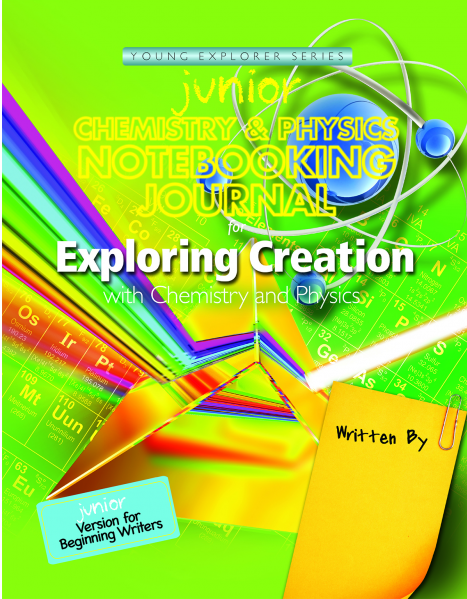

















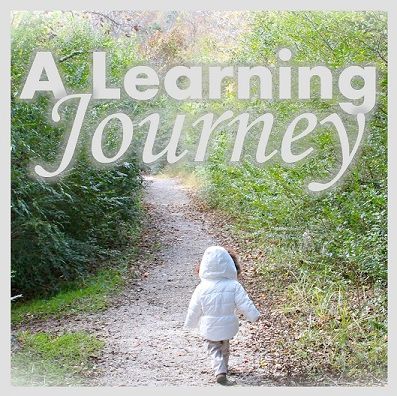






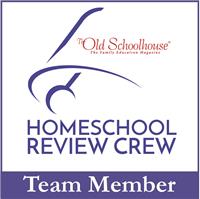
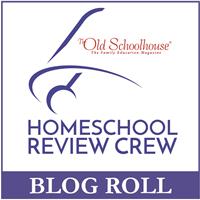





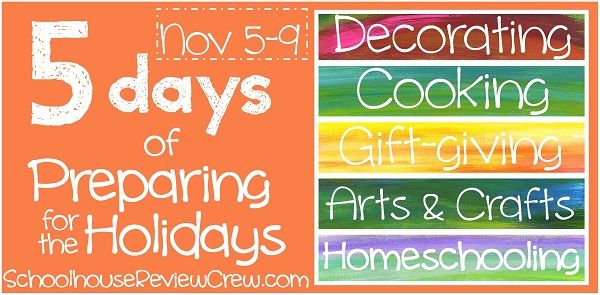
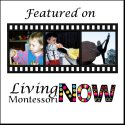


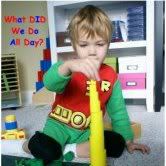



Great review! We are loving Apologia too!
ReplyDeleteThanks for sharing! I didn't realize Apologia's Chemistry and Physics was for younger ages. For some reason I thought it was one of their high school offerings. I am happy to realize that it is a choice for us. Thanks!
ReplyDelete